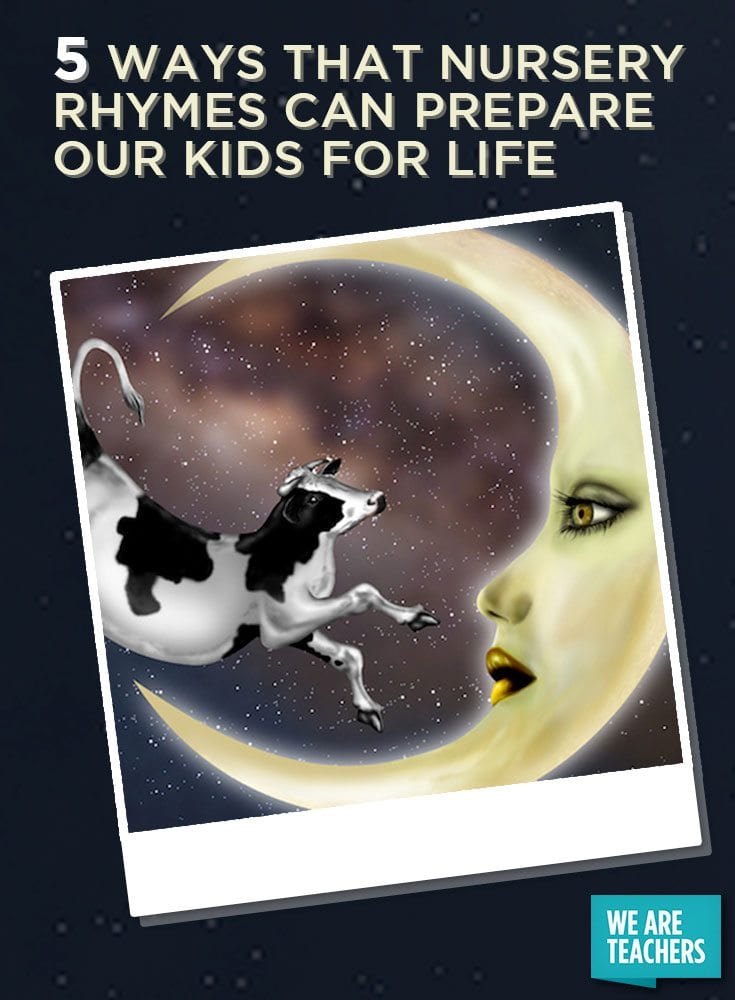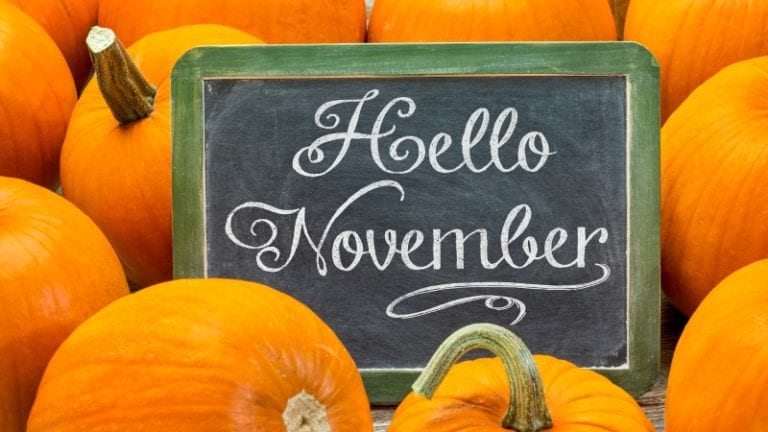For years, we have recognized the value of nursery rhyme lessons, even beyond the treasure of lap-time entertainment: rhyme and rhythm can boost kids’ cognitive development; the rich language gives children vocabulary nuggets; children who know nursery rhymes become good readers. This information is not new.
But we are just beginning to see another powerful gift from nursery rhymes—in building young writers. (Learn more about this topic from our Facebook Live event.)
Using the structures from the nursery rhymes, we can show students how writers move from one point to another. It’s simple, it’s natural, and it’s fun. But these structures also acquaint students with a huge range of topics, giving them a wide variety of ways to use their words in many different situations. Here are a few examples.
1. Naming feelings
Many nursery rhymes deal with feelings that all children experience.
After reading and exploring the text from Old Mother Hubbard, for example, we brainstorm with students about their own disappointments: when the store didn’t have what they were looking for, when a movie wasn’t showing any more, when a restaurant was closed.

Then, making up one sentence for each of the boxes below, we have a tiny essay. A kernel essay, like this one:
We drove to the store.
My mom was going to buy me some black tennis shoes.
They didn’t have them in my size.
I felt so disappointed.
2. Building problem-solving skills
There are many ways to talk through problems. This structure shows one way.
With students, we read Jack Sprat and explore the nursery rhyme. Jack and his wife had that terrible problem—he didn’t want to eat fat meat, and she didn’t want to eat lean meat. We can see how they solved their problem, and that takes us to our own lives. We turn the reading into writing, now exploring how this may have happened in our own lives. Sandwiches with or without the crusts, cookie outsides/cookie fillings, donuts/donut holes. Students can talk through or write down their own win-wins, whether it’s about food or something else.

I like to hear music, but I don’t like to sing.
My sister likes to sing.
She sings to me on our road trips.
3. Developing empathy
Essential to a civilized world is the ability to put ourselves into other people’s shoes. Many nursery rhymes offer us a chance to be curious about others and imagine their outlook.
For example, there’s Little Tommy Tucker. After we read it and enjoy the language, the rhythms, the silliness of it, we look again at the structure. We brainstorm with our students about times we have seem someone do something that made us curious.

The lady at the drive-through window was laughing when she gave us our food.
What was funny?
Does she always have fun and laugh, even while she’s not at work?
Does she have laughing children?
4. Explaining information
One of the key goals in school is information processing, both taking it in and explaining it to others. Many nursery rhymes have structures useful for this expository writing.
After reading about Mary’s little lamb, students can brainstorm their own favorite possessions and follow the structure from the nursery rhyme to compose their own expository kernel essay.

I have a little blanket.
It’s green and fuzzy.
I sleep with it every night.
When my mother was expecting me, someone gave it to her at a shower.
5. Rehearsing for academic writing
Are there long-term benefits of using these structures? Will children grow out of them? No. We use structures like these all the way through our lives. But now students will already be playing and talking with the same processes they will be using later in school, in their professions, and as citizens—organizing language into chunks to accomplish an objective.
There Was an Old Woman Who Lived in a Shoe and the Declaration of Independence? Nearly the same structure. There is no limit to what we accomplish when we use our words. And nursery rhymes offer us a wonderful beginning.


What do you think, teachers? Do you use nursery rhymes in the classroom? Would you try incorporating nursery rhyme lessons into writing workshop? You can learn more about how Gretchen Bernabei uses nursery rhymes to teach writing in her new book, Text Structures From Nursery Rhymes.



